Further reading
- C. Dekker (red.), Geschiedenis van de provincie Utrecht (Utrecht, 1997)
Luidger | |
|---|---|
| Bishop of Utrecht | |
| Church | Catholic Church |
| Diocese | Archdiocese of Utrecht |
| In office | 848–854 |
| Personal details | |
| Died | 854 |
Liudger or Ludger was Bishop of Utrecht from around 848 to ca. 854.
Ludger was probably related to several other bishops of Utrecht from the ninth and tenth centuries, including his predecessor Alberik II. That this family was not averse to nepotism is shown in a certificate from 850, which showed that an uncle of Ludger called Baldric was planning to found a chapter that would be led by Ludger, according to a structure that would give clear advantages to their family. Ludger was also supposed to be succeeded by a close relative called Kraft, but he declined the seat because he was afraid that his personal wealth would attract Viking raids. Ludger was buried in the St. Salvator Church in Utrecht.

Boniface was an English Benedictine monk and leading figure in the Anglo-Saxon mission to the Germanic parts of Francia during the eighth century. He organised significant foundations of the church in Germany and was made bishop of Mainz by Pope Gregory III. He was martyred in Frisia in 754, along with 52 others, and his remains were returned to Fulda, where they rest in a sarcophagus which remains a site of Christian pilgrimage.

Utrecht, officially the Province of Utrecht, is a province of the Netherlands. It is located in the centre of the country, bordering the Eemmeer in the north-east, the province of Gelderland in the east and south-east, the province of South Holland in the west and south-west and the province of North Holland in the north-west and north. The province of Utrecht has a population of about 1,388,000 as of January 2023. With a land area of approximately 1,484 square kilometres (573 sq mi), it is the second smallest province in the country. Apart from its eponymous capital, major cities and towns in the province are Amersfoort, Houten, IJsselstein, Nieuwegein, Veenendaal and Zeist. The busiest railway station in the Netherlands, Utrecht Centraal, is located in the province of Utrecht.
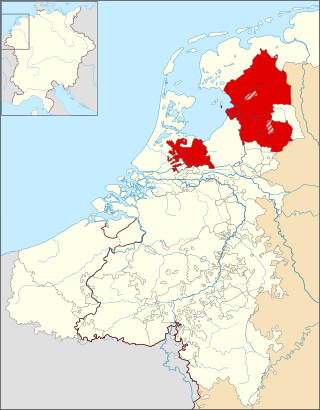
The Bishopric of Utrecht was an ecclesiastical principality of the Holy Roman Empire in the Low Countries, in the present-day Netherlands. From 1024 to 1528, as one of the prince-bishoprics of the Holy Roman Empire, it was ruled by the bishops of Utrecht.
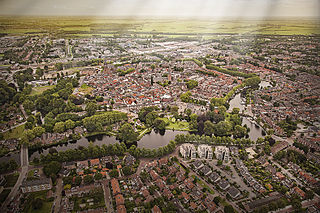
Woerden is a city and a municipality in central Netherlands. Due to its central location between Amsterdam, Rotterdam, The Hague, and Utrecht, and the fact that it has rail and road connections to those cities, it is a popular town for commuters who work in those cities.

The Hook and Cod wars comprise a series of wars and battles in the County of Holland between 1350 and 1490. Most of these wars were ostensibly fought over who should hold the title of "Count of Holland", but some have argued that the underlying reason was a power struggle conducted by the bourgeois in the cities against the ruling nobility.
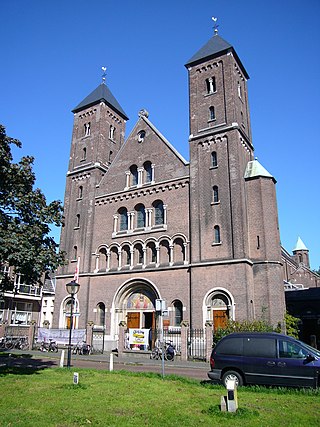
The Old Catholic Church of the Netherlands, sometimes Jansenist Church of Holland, is an Old Catholic jurisdiction originating from the Archdiocese of Utrecht (695–1580). The Old Catholic Church of the Netherlands is the mother church of the Old Catholic Union of Utrecht.

The County of Holland was a state of the Holy Roman Empire and from 1433 part of the Burgundian Netherlands, from 1482 part of the Habsburg Netherlands and from 1581 onward the leading province of the Dutch Republic, of which it remained a part until the Batavian Revolution in 1795. The territory of the County of Holland corresponds roughly with the current provinces of North Holland and South Holland in the Netherlands.

John Robinson was an English diplomat and prelate. He became the Bishop of London and Dean of Windsor, succeeding to Henry Compton.
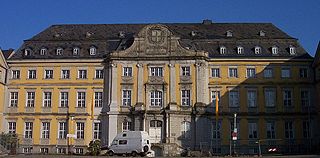
Werden Abbey was a Benedictine monastery in Essen-Werden (Germany), situated on the Ruhr.

Ludger was a missionary among the Frisians and Saxons, founder of Werden Abbey and the first Bishop of Münster in Westphalia. He has been called the "Apostle of Saxony".

Gregory of Utrecht was born of a noble family at Trier. He became a follower of Saint Boniface, who sent him to study at the Monastery of Saint Michael at Ohrdruf. He then accompanied Boniface on his missionary journeys. In 750, Boniface appointed Gregory abbot of St. Martin's Monastery in Utrecht. St. Martin's became a centre of learning and missionary activity. When, in 754, Eoban left to accompany Boniface on their last missionary trip, Gregory was tasked with administering the diocese of Utrecht, which he did faithfully for the next twenty-three years until his death in 776.
Dirk III was the count with jurisdiction over what would become the county of Holland, often referred to in this period as "West Frisia", from 993 to 27 May 1039. Until 1005, this was under regency of his mother. It is thought that Dirk III went on pilgrimage to the Holy Land around 1030, hence his nickname of Hierosolymita.

The Prince-Bishopric of Münster was a large ecclesiastical principality in the Holy Roman Empire, located in the northern part of today's North Rhine-Westphalia and western Lower Saxony. From the sixteenth to the eighteenth centuries, it was often held in personal union with one or more of the nearby ecclesiastical principalities of Cologne, Paderborn, Osnabrück, Hildesheim, and Liège.
Saint Alberic of Utrecht, Dutch: Alberik I van Utrecht, was a Benedictine monk and bishop of Utrecht, in what is today the Netherlands.
Hildegrim was Bishop of Châlons from 804 to 810 and the second abbot of Werden Abbey, after his elder brother Ludger, from 809 until his death.
Ricfried was Bishop of Utrecht between 806 and 815/816.
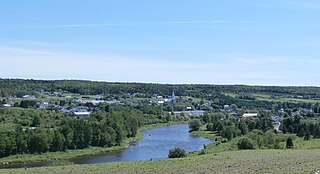
Saint-Ludger is a municipality in the Le Granit Regional County Municipality in Estrie, Quebec, Canada, on the Canada–United States border. Population is 1,074 as of 2021.
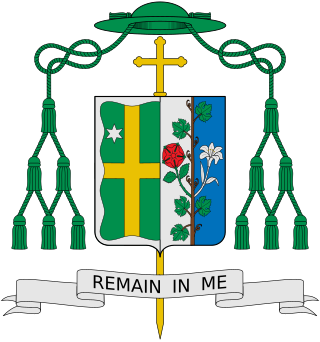
Joseph Gerard Hanefeldt is an American prelate of the Roman Catholic Church. He has been serving as bishop of the Diocese of Grand Island in Nebraska since 2015.

Ludger is a masculine given name. Notable persons with the name include:

St Ludger's Church, also called Ludger's Cathedral, is a Roman Catholic pilgrimage church in the city of Billerbeck in the Diocese of Münster and one of the two churches of the Parish and Provostry of St John and St Ludger. It is a neo-Gothic hall church with transepts.